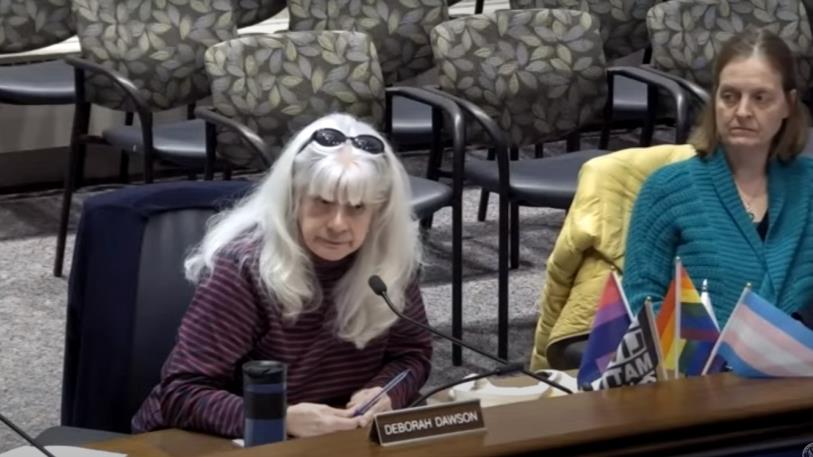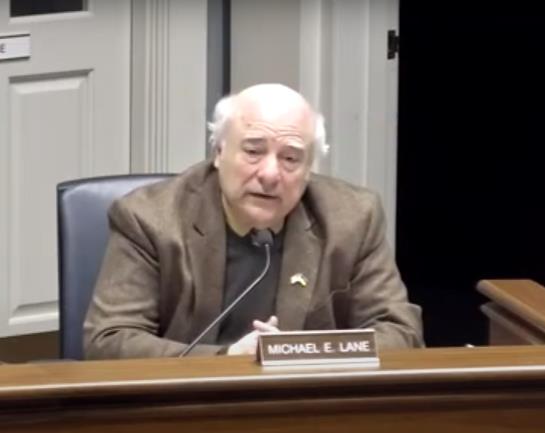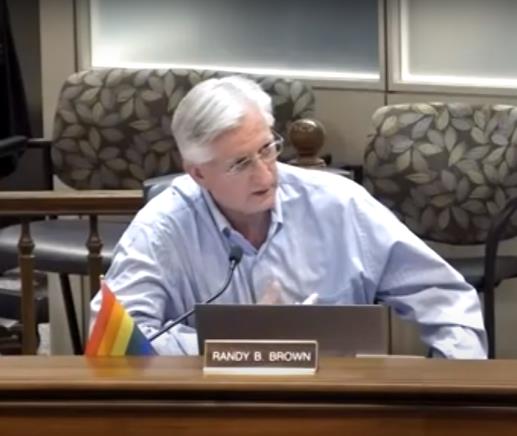
by Robert Lynch; February 21, 2024
Tuesday was Deborah Dawson’s birthday. Her colleagues on the Tompkins County Legislature sung her “Happy Birthday” at one playful point in their otherwise hum-drum two-hour meeting. Then, near meeting’s end, Dawson shook the beehive of controversy. Perhaps casting a wish before blowing out her imaginary cake’s candles, the Lansing Democrat urged Tompkins County to revisit the possibility of setting a local minimum wage, one higher than that for any other community in New York State.
“In the last week or so, the Workers’ Center issued some information indicating that the level of wage and wealth inequality in Tompkins County is among the highest in the state,” Dawson stated spontaneously. “Which led me to consider the Workers’ Center suggested that one solution to this problem could be to establish a countywide minimum wage that was equivalent to the determined Living Wage.”
The minimum wage that New York State sets for upstate employees is now $15 an hour, newly-raised in January. The hourly “Living Wage,” estimated locally by Alternatives Federal Credit Union (AFCU), and at least until now left unchallenged by decision-makers, is $18.45. Were Tompkins County to go-it-alone and set its own, higher minimum at AFCU’s supposed benchmark, low-wage workers across Tompkins County would see a 23 per cent increase in their pay. And those who employ those workers would shoulder a 23 per cent extra burden to pay them.

“I don’t know if that’s within our purview,” Dawson wondered aloud. “I don’t know if that’s something we’ve considered. I don’t know what impact that would have on local businesses,” she added. “But if we really are concerned with leading by example and adhering to Living Wage recommendations, I would support that (namely, the higher wage). I think that’s something we might want to investigate.”
Deborah Dawson joined the County Legislature in 2018, as did several of her liberal colleagues. Still others have come onboard later. So institutional memory can often run thin. Yet now would not be the first time that local worker activists have demanded Tompkins County raise its minimum wage above what New York State otherwise requires.
In late 2015, the County Legislature considered a county-wide minimum wage at the then-calculated higher Living Wage rate of $14.34 per hour. At the time, the statewide minimum was only $8.75. The matter got no further than the Tompkins County Council of Governments (TCCOG), which rejected the idea in a divided vote. The County Legislature, rather than setting a higher local wage, opted instead to urge then-Governor Cuomo to embrace a $15 per hour statewide minimum.
Living wage advocates petitioned County lawmakers again two years later, but also without success. The minutes from a June legislative committee meeting that year reported Dawson as having spoken in favor of the higher Living Wage, though as a private resident.
“I don’t even know if it’s something realistically we can do,” said Dawson during this more recent discussion Tuesday, “but I think given how unpleasantly surprised I was by the findings of the report, we really ought to be considering whether there’s something we should be doing.”
Some could brush off Deborah Dawson’s urging as a random, throw-away remark and relegate its immediate, in-the-room responses to little more than an easily-discarded footnote to a routinely-adopted resolution that elevated a few County Government salaries to meet the new Living Wage standard. But experience proves that this is how initiatives germinate in downtown’s Legislative garden. And as soon as Dawson’s words were spoken, not one, but multiple committee chairpersons were found jockeying to take the lead on making the Living Wage crusade their committee’s own.
“Happy to put it on the agenda at some point and pull the right people together for what I’m sure will be a vigorous and spirited discussion on the topic,” Housing and Economic Development Committee Chair Greg Mezey volunteered. “I’m sure it would entail multiple meetings and multiple presentations,” he assured everyone.
Workforce Diversity and Inclusion Committee Chair Veronica Pillar would rather the topic land in her lap. And the Budget, Capital, and Personnel Committee, on which Dawson sits, was another potential destination. Members sounded open to multi-committee collaboration. What that interest speaks to is enthusiasm, at least on the County Legislature’s Left flank. Committees take the issue up; activists flood the gallery; the sausage grinding begins; and something cobbled together invariably finds itself on the agenda.
If Tompkins County were to supplant New York State’s $15 minimum wage with its own $18.45 per hour AFCU standard, Tompkins County would require employers to pay more than even those in New York City and on Long Island do, where the hourly rate is currently $16, and set to rise to $17 by 2026. Upstate minimum wages will climb to $16 by 2026. All these rates lie below the Living Wage suggested locally.
No one spoke directly against a higher local minimum wage during Tuesday’s seven-minute impromptu discussion. Republicans remained mum. But Dryden’s Mike Lane came closest to tossing a bit of cold water. Records show Lane spoke out against setting a Living Wage minimum at that TCCOG meeting in 2015. And Tuesday, he voiced caution once again.
“We’ve always been an area with low wages and high cost of living in Tompkins County,” Lane acknowledged. “So what they’re saying is not surprising,” he admitted. “But to try to have us as Tompkins County have a local law requiring all employers to have a Living Wage as the minimum wage; first of all… I’d be very surprised if we have any authority to do that.”

To Lane’s point, the legislator may have recalled that during the 2015 discussions, advocates conceded they’d need to seek Home Rule legislation through the State Senate and Assembly to elevate the local minimum wage above what Albany then mandated.
“And if you’re going to do this,” Lane said Tuesday of prospects for a local minimum wage, “I think you probably need some kind of a task force looking at it because the ramifications of this and how it would affect our employers out there from not-for-profits to regular small businesses could be very large.”
“And does that mean our businesses start leaving Tompkins County?” Lane then asked.
The fear of business exodus to Tompkins County’s neighbors became a prime argument against the local Living Wage initiative a decade ago. Indeed, in 2015, the City and Town of Ithaca had rejected Living Wage laws of their own in fear Ithaca businesses would move to rural towns just to get beyond the law’s reach.
What Tuesday’s meeting missed most to liven it up was Mike Sigler. The Lansing Republican, excused from the session for unexplained reasons—perhaps he was away pursuing his campaign for State Senate—would have, no doubt, confronted Deborah Dawson head-on, as he often does on such occasions. One can only draw upon a December 2015 legislative minimum wage debate to envision what Sigler might have said.

“If the minimum wage was passed locally at (the then-proposed $15),” the December 1, 2015 minutes quote Sigler, “the big businesses would benefit the most and the small businesses would be most negatively impacted.” Sigler’s quotation continued, “[W]hile the intentions are good there will be many unintended consequences that will not be good.”
Alternatives Federal Credit Union, using a multiple-source of data, has estimated local “Living Wage” incomes since 1994. Its criteria consider local expenses for housing, food, health insurance, clothing and even entertainment. Leaders have never seriously questioned the credit union’s metrics, until maybe now.
“How did we decide that we were going to use Alternatives Federal Credit Union as the basis for this?” Newfield-Enfield legislator Randy Brown asked Tuesday.
Inertia seems to be the answer. Mike Lane recalled that the AFCU standard arose from a blue-ribbon committee’s study under a prior County Administrator. It was a panel comprised of non-profit representatives, people from the Chamber of Commerce, and others. Charged with setting a Living Wage for the County’s own workforce and contractors, the committee chose the credit union’s formula.
Should we continue with the Alternatives’ standard? “We don’t have to,” Lane told Brown. “We could do something different,” he said. “But at this point, this is what we’re doing.”

AFCU released its new $18.45 Living Wage calculation in November. Using slightly-modified methodology resulting from a new, heightened tie-in with Cornell’s School of Industrial and Labor Relations, AFCU said the Living Wage rose from $16.61 for the prior year. In its eight-page report documenting its estimate, AFCU said it took “nine basic needs categories” into account, placing childcare expense into a separate, additional category.
“In 2022-23, workers’ wages in Tompkins County have not kept up with the rising cost of living,” the AFCU study concluded. “Out of approximately 48,020 wage earners (i.e., excluding the self-employed) living in Tompkins County, we estimate that 38% earn hourly wages below $18.45,” the report stated. “This means that just under 18,000 workers earn less than the County’s 2023 living wage estimate.” The report also detailed alleged racial and gender inequities.
Legislator Rich John asked whether AFCU’s methods for reaching its estimate have gotten a fresh vetting. County Administrator Lisa Holmes conceded that no one in her office has studied the credit union’s methods since their adoption many years ago.
“I think going forward we probably should have somebody at the County looking at the methodology just to say this makes since,” John responded.
Holmes informed the Legislature that Tuesday’s adoption of the AFCU revised Living Wage for County employees would have minimal impact. The rise would affect only a few seasonal workers and information aides.
###

